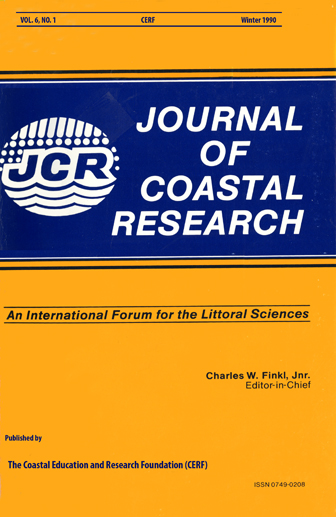Wave Spectra for a Shallow Meso-Tidal Estuarine Lagoon: Bay of Plenty, New Zealand
Keywords:
JONSWAP, Rayleigh distribution, seiches, wave climate, Weibull distributionAbstract
The wave climate of Tauranga Harbour, a shallow meso-tidal estuarine lagoon in the Bay of Plenty, New Zealand, was investigated between 1984 and 1987. Two main groups of waves were identified, viz., high frequency waves, f>0.0714 Hz (period < 14 s ), and low frequency waves, f<0.0714 Hz, excluding the semi-diurnal tidal oscillations. The low frequency waves were analysed by spectral techniques only. The high frequency component of the wave climate is dominated by wave energy transmitted through the harbour entrance, with ~70% of the energy in the average harbor spectrum attributable to this source. The harbour entrance filters the wave energy passing through it, restricting most of the energy to a relatively narrow frequency band. Windwaves generated within the harbour also contribute a significant proportion of the wave energy within the average spectrum. A spectral relationship, based on the JONSWAP spectral form, was derived and this is presented. Seiches occur frequently within the harbour, usually in association with wind speeds exceeding 9.5 m. s-1 over the harbour, but also in response to external forcing by tsuanamis and large external swell waves. The seiche frequencies are not controlled by the harbour channels or dredged shipping basins. The largest oscillations within the harbor are caused by tsunamis and storm surges.


